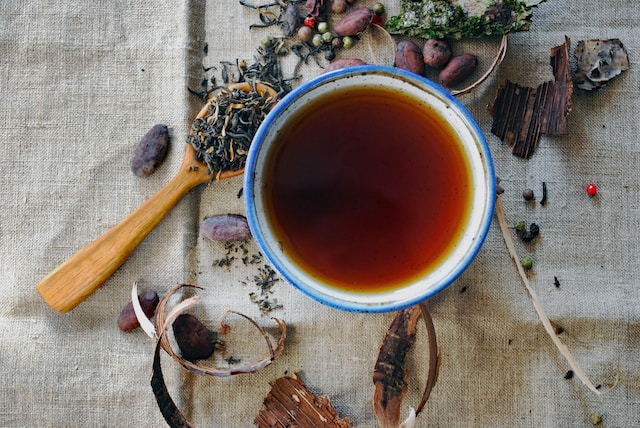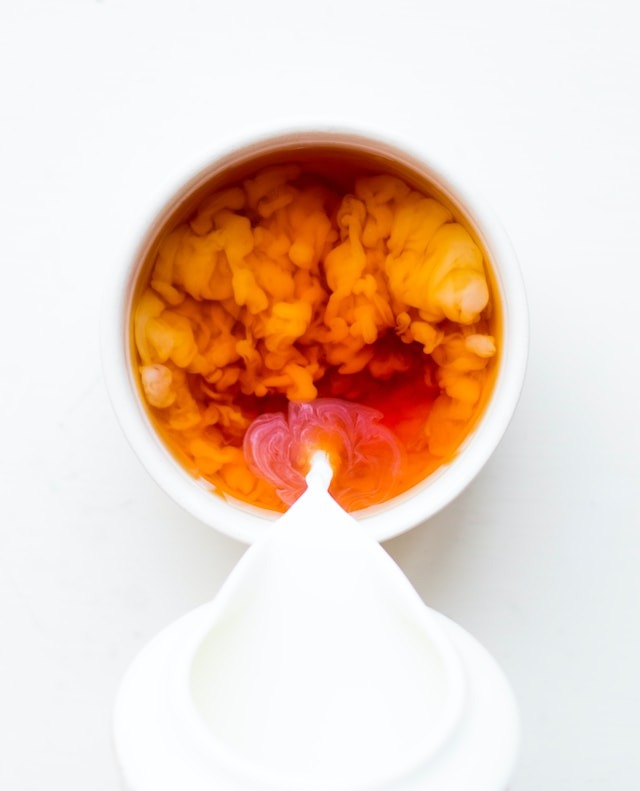Ah, Tea. Who doesn’t like to unwind after a long day with a cup of this beautiful, aromatic liquid gold? With its wide variety of types such as black, green, yellow, or white tea, tea is well-loved all of the world. In addition to taste, tea has anti-inflammatory properties and helps boost immunity.
Early tea-drinking practices involved boiling tea leaves in water without the addition of anything else. Presently, from spiced chai lattes to boba milk teas, the addition of milk to tea has become a popular practice. This brings us to the intriguing world of pH levels; in this article, we explore how the different pH ranges of tea and milk combine to give you a delicious fusion of flavours.
What is pH and why is it important?
Simply put, pH (potential of hydrogen) is the scale ranging from 0-14 which is used to measure the acidity or bacisity of a liquid solution. Acidic solutions have a lower pH value than basic or alkaline solutions, so the lower a solution ranks on the pH scale, the more acidic it is and vice versa.
As a general rule of thumb, a pH of 7 (pH of water) is considered neutral and anything lower than 7 is deemed acidic, while anything higher than 7 is considered basic or alkaline.
People keep track of acid content in their food due to medical conditions like hyperacidity and gastroesophageal acid reflux. It is also believed that increased intake of acidic foods can affect the pH levels of urine and create digestive problems. So, a balanced diet is necessary to regulate and maintain the pH levels in your body.
Also Read – Bengal Spice Tea – The Cultured Indian Brew
What is the pH of tea?
The pH of tea depends on factors like the type of tea leaves and brewing methods. For example, black tea is acidic, green tea is more on the neutral level, and white tea is alkaline. Most teas have neutral to mildly acidic pH levels.
The acidity of tea comes from the natural organic acids like tannins (tannic acid) and poyphenols present in it. An easy way of measuring acidity is the more “tea- like” your tea tastes, the more acidic it is. Additionally, processed teas like black tea and oolong tea tend to be more acidic while fresh leaves like green and white teas are more alkaline.
Here is the rundown of the pH levels of different teas for your reference (note: the pH measure here is without the addition of milk).

Photo by Drew Jemmett on Unsplash
Black tea
Typically, black tea has a pH of 6.37 which means that it is mildly acidic. However this may vary depending on the amount of tea leaves you use and concentration of your tea. The longer you steep you tea bags or tea leaves, the more concentrated or strong your tea will be. In this case, concentrated black tea’s pH can go down to a 4.9 on the pH scale.
Green tea
The pH level of most green teas ranges from between 7 to 10 on the scale; this makes them neutral, leaning more towards the alkaline side. Quite the opposite of black tea, the more concentrated your green tea is, the more alkaline it becomes.
White tea
Although white tea comes from the same plant which also produces black, green, and oolong teas, it is more alkaline with a pH range between 8 to 10. This is because leaves for white tea are harvested when they are very young, making them less prone to oxidation which affects the acidity of tea.
Oolong tea
As discussed earlier, oolong tea is more oxidized than white tea so it tends to be more acidic. Depending on the brewing process and concentration, the pH value of oolong tea could range between 5.5 to 8.
Earl Grey tea
Earl Grey tea, also known as bergamot tea, is made from black tea with an addition of bergamot essential oil which contains citruc acid. As a result of this ingredient, Earl Grey tea is typically acidic with a pH value of 4 to 4.5
Herbal tea
Herbal tea is a blanket term which is used to describes tea made from flowers, leaves, and spices steeped in hot water. Here are the pH values of some popular herbal teas:
- Lemon tea – highly acidic, pH of 3
- Peppermint tea – mildly acidic, pH of 6-7
- Chammomile tea – mildly acidic, pH of 6-7
- Ginger tea – slightly alkaline, pH of 7-7.5
- Lavender tea – alkaline, pH of 8-9
- Hibiscus tea – alkaline, pH of 9
Matcha
Even though matcha is harvested from the same plant as green tea, it is shade-grown for week before harvest which goves it its vibrant green colour and a high alkaline content of 9 on the Ph scale.
What is the pH of milk?
It may not come as a surprise that milk is a slightly acidic liquid. Its acidity is the result of the presence of lactic acid, a natural compound forned by the bacteria in milk. However, with a pH value of 6.4 to 6.9, milk is closer to being neutral than acidic. It should also be noted that milk does not produce acid unless it is fermented.
When milk is added to tea (mostly black tea), the chemical compounds in both liquids interact, resulting in a change in the pH of the mixture. However, due to milk’s mild acidity, these changes are very subtle and do not drastically alter the taste and pH of the tea. In fact, the pH of most milk teas are closer to the pH of milk itself.
What is the pH of milk tea?
As mentioned earlier, the pH of milk tea is closer to the pH of milk itself. It typically falls between 6.4 to 6.8 which makes milk tea a mildly acidic beverage. The exact pH of your chai latte is a bit tricky to measure as it depends on a range of factors like the type of tea used, concentration of tea, the time and temperature of brewing, and the amount of milk added.
A longer brewing time at a higher temperature will extract more out of the tea leaves and give you a tea which is more acidic. Similarly, the concentration of milk will also affect the pH balance of your tea.

Photo by rajat sarki on Unsplash
Flavour and texture of milk tea
The addition of milk to a black tea or matcha base results in a pleasantly smooth beverage. Milk balances out the natural bitterness of the tea and gives it a sweet and mellow flavour. Additionally, the texture is richer and creamier, giving the tea an enjoyable mouthfeel. Furthermore, milk also elevates the complex flavour of the tea while cutting down on the astringency.
Conclusion
The pH of tea with milk (6.4-6.8) is in the slightly acidic territory which elevates the taste without being overwhelming. The next time you sip on your favourite masala chai, bubble tea or British tea, take a moment and think about the science behind the perfect amalgamation of different liquids with different pH values flavours and textures.
Hey welcome to my blog . I am a modern women who love to share any tips on lifestyle, health, travel. Hope you join me in this journey!

Speak Your Mind